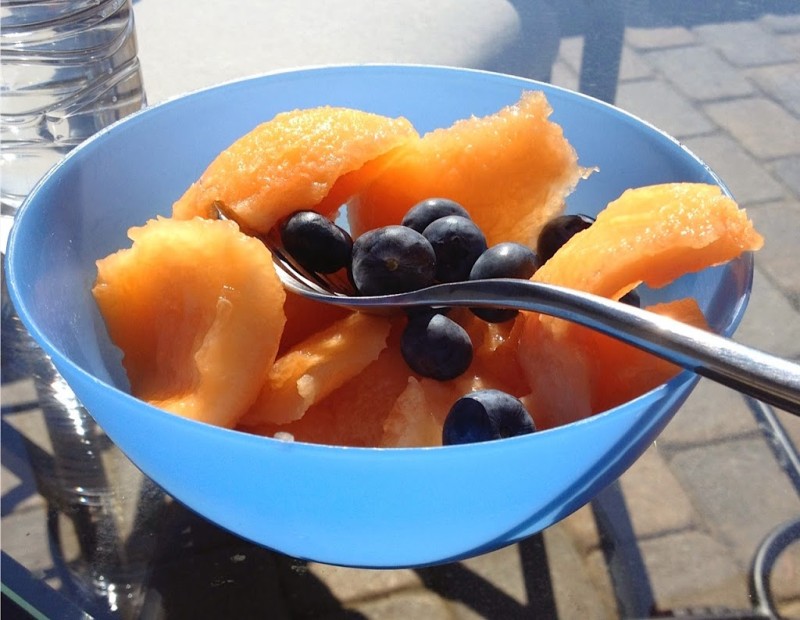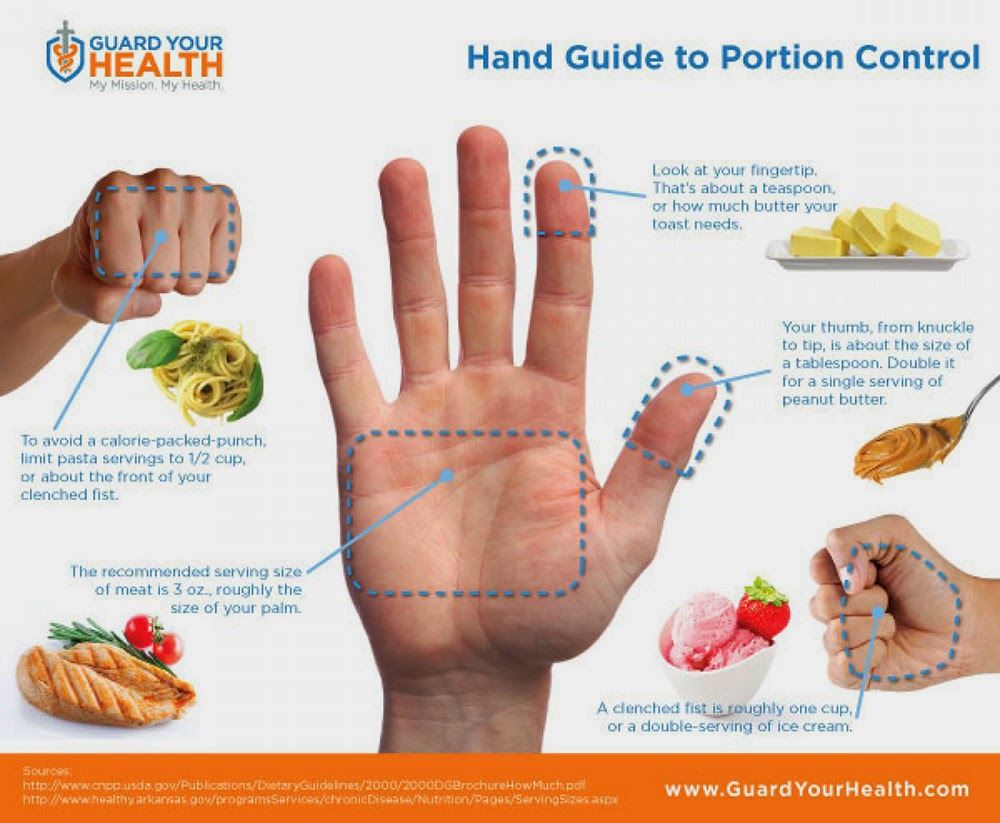Clean Eating. It’s a phrase many people throw around, but when you talk specifics with people it turns out it means something different to everyone. For example, to a body builder the fruit in the picture above might not be “clean” because it has sugar in it.
Everyone approaches clean eating differently. If you want to lose weight caloric expenditure must be higher than caloric intake (this is true no matter what you eat. Binge eating “clean” foods is still binge eating.) I also want to stress the fact that there is no evil food. There are foods that are higher in nutrients and foods with low nutritional value.
This is my approach to clean eating. The more closely I stick to eating clean the better I feel, and I see much more definition in my body. I have been re-focusing on incorporating these techniques into my diet, and I am already seeing results. Check out 5 Rules to Improve Your Nutrition and Diet for more healthy eating ideas.
Clean Eating means eating food which is minimally processed, and as close to it’s natural state as possible. Eat whole foods: lots of veggies, lean meats, nuts and fruit. At it’s heart, this is the key to clean eating.
This means that you have to put a little bit more preparation and planning into your food choices.
1. Prepare: If you are hungry you often want to grab the first thing that’s available. Keeping healthy options on hand will improve your chances of success.
- Cook in Bulk: Prepare extra food ahead of time. On Sundays I cook a large baking dish full of chicken (sometimes fish), and a dish full of vegetables. I can use these in my lunch, on a salad, in pasta, or as an easy addition to any dinners I might cook during the week.
- Plan for Healthy Snacking: If you are a snacker keep food items on hand that you enjoy and can eat in appropriate portion sizes. Raw Almonds or other nuts, Fruit, Greek Yogurt, etc. You can pre-portion out ingredients for your favorite smoothie.
- Choose Foods that you Enjoy: You are not going to stick to a meal plan if you don’t like what you are eating. Don’t be afraid to experiment with healthy variations of your favorite recipes. Pinterest can be a gold mine of fun and healthy recipe ideas. You can check out my “Healthy Delicious” Pinterest Board here for some fun ideas.
2. Portion: Making healthy choices doesn’t make you exempt from eating realistic portion sizes. Just because an item is healthy doesn’t mean it’s low in calories. Two of my favorite foods in the world are Natural Peanut Butter and Avocados. Both foods have tremendous health benefits. Neither is a low calorie food.
- Check Portion Sizes: When you are first getting used to portion sizes don’t be afraid to measure. Keep in mind that measuring is a tool. If measuring food is a trigger to compulsive eating behaviors for you, please skip this one. Having a healthy relationship with food is more important than having an exact portion size.
- Approximate Portion Sizes: Meat/Protein should be around the size of your palm, or the size of a deck of cards. One serving of cheese is about the size of your thumb. Vegetables should fill about half of your plate or two cupped hands.
3. Check Labels: Take a quick peek at the ingredient list. I also check the sugar and sodium content of pre-packaged foods. Many otherwise healthy foods are overloaded with additional salt and sugar. (This is especially true of dried fruits and trail mixes. Dried fruit is already high in natural sugars, and many companies add significant amounts of sugar to the fruit during the drying process.)
- Look for ingredients you recognize. For example, I prefer Peanut Butter where the only ingredient is Peanuts.
- Ingredients are listed in order of quantity. Whichever ingredient is listed first is present in the largest quantities. If sugar is the first or second ingredient it’s a red flag to me that the food item is not as healthy as it may seem.
4. Organic/Gluten Free/Grain Free does NOT Automatically Mean Healthy: Just because it has a label, doesn’t mean it’s healthy or low calorie. Cookies are still cookies, even if they are organic and gluten free. It doesn’t mean you can’t enjoy them, but remember the term “organic” or “gluten free” does not make it a magic cookie. Keep your portion sizes reasonable.
5. Stick to the Basics: Incorporate protein, carbohydrates, healthy fats, and proper hydration into your diet.
- Try to include a vegetable at every meal. For me, the easiest and fastest option is fresh spinach. I put spinach in salads, smoothies, wraps, sandwiches, pastas, spaghetti sauce, or as a side dish.
- Eat Carbohydrates: They are necessary for your body and brain to function correctly. You can get your carbs from fruits and vegetables, from grains or from a combination of both. Food=Fuel.
- Eat Lean Protein: Protein helps keep you full throughout the day and helps your body build muscles.
- Eat Healthy Fats: Healthy fats have been scientifically proven to improve endurance during workouts. They also help your hair and nails look their best. Healthy fats decrease your risk for a plethora of diseases (heart disease, stroke, and hypertension just to name a few!) Olive oil, avocado, coconut, nut butters, and nuts are great sources of healthy fats.
 |
| Spaghetti Squash over Fresh Spinach with Tomato & Spinach Marinara Sauce and Chicken. |
There is no secret to healthy eating. The trick to it is finding a healthy approach that works for you. I don’t eat whole foods all the time, but I make sure they are the foundation of my diet. Today I ate a donut (gasp!) and I don’t feel guilty, or that I had to “earn it” or “work it off.” I don’t eat donuts every day. I do eat vegetables, fruits, nuts and lean meats every day. I exercise and try to make healthy choices.




Great article!
Do you eat Quinoa? Is That considered a Clean Food? I eat it plain 3 times per week but not sure if that’s too much
You are 100% spot on woman! I loved your blog on how you cook ahead on Sunday…and that makes healthy eating so much easier. Thank you for such a balanced and healthy approach to everything you do!
Quinoa is really good for you. It’s one of the only 2 plant foods that is a complete protein (the other being tofu), but it is calorie dense so be sure to watch your portions.
Thank you for this. xo
you are so wonderful! thank you for doing this, you have bee so helpful!
Wonderful article! We are so busy in our routine and these tips really helpful to stay healthy in busy life.
Great article, Melissa! Very helpful tips! Thank you for sharing!
Clean eating for every week or even a month may be realistically manageable however in the event that you longing to make it your lifestyle there will be highs and lows,delights and successes.Eating clean is equivalent to running a marathon; you need to pace yourself,motivate yourself, and above all else dedicate yourself.~Lisa Moore.
This is really helpful. I would be really interested to know if you include alcohol in your diet at all? I try to limit it to weekends but even then it’s hard to stick to just one glass …
I rarely drink. I will have some wine or a margarita every once in a blue moon. Alcohol does impact progress, and specifically belly fat. I think you’re on the right track, with limiting your alcohol intake.
So glad to know you rarely drink. Not only does it add calories but it is just a good decision to limit to very special occasions. I’m coming back from a long hiaitus and yesterday’s gym workout was so refreshing. Can you recommend a workout of your for an oldie coming back to the mat?
Welcome back! I just posted a new weekly workout schedule. Day 1 is a brand new workout. It’s a tough one, but really effective.
If you’re just coming back to workouts completely, try the Day 3 workout. It’s low impact, but very effective.
https://www.benderfitness.com/2019/03/weekly-workout-schedule-bfbodyfit-week-30.html
Mellisa, you recommended 1 gram of protein for every pound of the body weight you want when building muscle. Correct me if I’m wrong. If so, how do you incorporate that much protein in your daily diet?
That’s correct! It can be a challenge. I incorporate proteins into every meal, and even some snacks. For example, Plain Greek Yogurt with nut butter mixed in. Oatmeal with eggs and PB. Chicken or fish for lunch and dinner. My body doesn’t respond well to protein powder, but many people add that into their plan.
I do like the No Cow Vegan Protein Bars by D’s Naturals. I like to chop them up and add it to oatmeal or Protein Pancakes.
Protein pancake recipe: https://www.benderfitness.com/2013/02/two-protein-pancake-recipes-rolled-oats-and-gluten-free.html